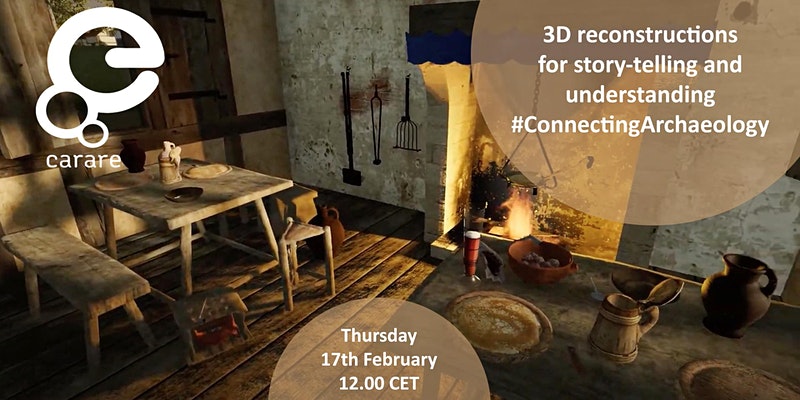|
Digital meets Culture https://www.digitalmeetsculture.net/article/3d-reconstructions-for-storytelling-and-understanding/ Export date: Mon Dec 15 22:10:41 2025 / +0000 GMT |
3D reconstructions for storytelling and understanding This webinar explored some of the ways that 3D reconstructions are being used for story telling and to aid understanding. Two speakers gave short presentations: This webinar explored some of the ways that 3D reconstructions are being used for story telling and to aid understanding. Two speakers gave short presentations:
The video recording on CARARE's Vimeo channel: https://vimeo.com/678728267 The slides on CARARE's Slideshare channel: https://www.slideshare.net/CARARE/3d-reconstructions-for-story-telling-and-understanding Abstracts Dissemination Methods for 3D Historical Virtual Environments - Virtual reconstructions are valuable assets for academic research, heritage visualisation and immersive learning. With continual growth of digital literacies and capacities of personal technologies, methods of engagement are as diverse as the scenarios for deployment. Restrictions to heritage have expedited creative responses for continual interaction, extending the potential of virtual reconstructions as part of museum dissemination. Catherine will discuss methods of informal learning through use cases of virtual reconstructions within remote, museum-based and at home scenarios. Interactive storytelling in virtual worlds - The current state of the technology allows us to create fully interactive virtual recreations of the past and walk through them and interact with those environments in a very natural way. These worlds can be used by educators and guides to create virtual guided tours through these 3D environments and tell the stories of these historical sites for groups of people such as school groups or tourists, in the context of a museum or site. As the guide or educator is free to walk the virtual environment and adapt their story at will, the storytelling can fit with the interests or background of the audience. For individual visitors or families, an alternative approach can be provided through interactive objects that tell parts of the global story when touched or picked up. Bios Catherine Anne Cassidy is a PhD candidate in the School of Computer Science at the University of St Andrews, Scotland. She brings an interdisciplinary approach to the research group Open Virtual Worlds, which employs emergent technologies to create engaging interactive experiences for cultural and natural heritage organisations. Her doctoral research includes developing approaches to 3D digitisation that allows the value of digital heritage to be recognised while strengthening connections between heritage, its community and the museum through emergent technologies and their democratisation. Daniel Pletinckx was trained as a civil engineer, with specialisation in information technology. He gained extensive experience in system design, quality assurance, digital image processing and synthesis, 3D and virtual reality through a career of 14 years in private industry, and has 25 years of international experience in 3D digital heritage. Currently, Daniel Pletinckx is the director of Visual Dimension bvba, an SME dealing with ICT based innovation in cultural heritage, education and tourism. Visual Dimension specialises in new, efficient ways for the creation of and interaction with 3D digital heritage assets. The company works for a wide range of European heritage organisations and is active in several European projects. Visual Dimension is a senior partner in 4CH, the new European Competence Centre for Digital Heritage, leading the VR Storytelling activities. |